Choosing a Range Hood
Cooktops and stoves should be vented by a range hood. In addition to sucking up the smoke of a charred steak, range hoods exhaust airborne grease that might otherwise migrate to a cool corner and feed mold or adhere to woodwork and discolor its finish, as shown in the photos on p. 454.
Range hoods are most often wall-mounted directly over a range. Alternatively, there are downdraft and side-draft vents that pop up from a counter area to suck away fumes. Over island and peninsula ranges, you can install chimney-type vents. In general, install the type of vent that will carry exhaust gases outdoors with the shortest and straightest duct run possible. Because heated air rises, wall-mounted and chimney types are inherently efficient, whereas downdraft and side-draft vents pull heated gases in directions they wouldn’t go naturally and can even pull burner flames sideways.
Range hoods vary from low-powered and inexpensive (less than $50) to custom – designed units that cost thousands. A 100-cfm (cubic feet per minute) wall-mounted hood should be adequate to vent the average four-burner, 30-in.-wide range. But if that same range is located on a kitchen island, its range vent should draw 125 cfm to 150 cfm. More is not better when sizing range hoods. For one thing, larger hoods are noisier. Midsize range hoods average 3 sones to 3.5 sones (a measure of noise), which is too noisy to have a conversation near; monster hoods can reach 8 sones. (As a comparison, refrigerators register 1 sone.) Oversize hoods can also expel so much air that they create back-drafting, in which negative in-house air pressure draws furnace or fireplace exhaust gases back down the chimney (see Chapter 14 for more on back-drafting).
Ideally, a range hood should be slightly wider than the range, say, 3 in. wider on each end, and mounted 30 in. above the range. But follow the hood maker’s suggested mounting height; more powerful hoods can be installed higher. Finally, buy a unit with a good-quality filter that can withstand regular washing with soap and water. Most filters are aluminum mesh, better ones are stainless steel; many can be popped into the dishwasher, which spares homeowners a very greasy and unpleasant task.
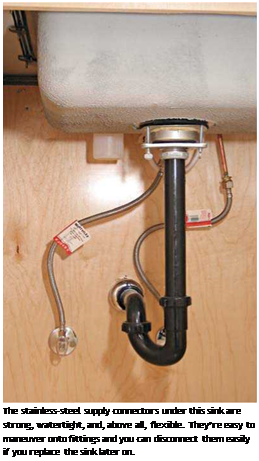
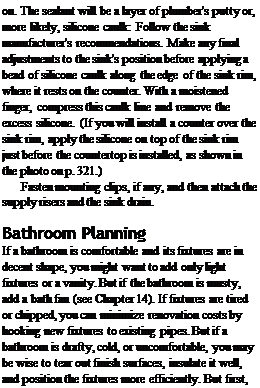 In general, be skeptical of range hoods that recirculate air through a series of filters rather than venting it outside.
In general, be skeptical of range hoods that recirculate air through a series of filters rather than venting it outside.
|
A nicely matched stainless-steel range hood and cooktop. Because cooktops are used far more often than ovens, the architect paired an oven and a microwave on an opposite wall, and put large drawers for pots and pans under the cooktop—so they’d be close at hand. ■ |
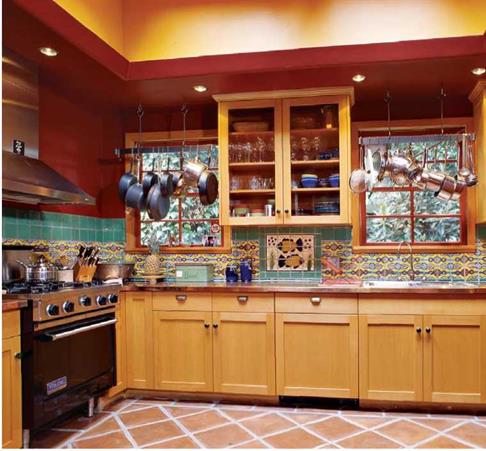

|
|
|
Ceiling light set back 10 in. to 12 in. from |
To illuminate work areas without strong shadows, use a combination of task lighting and general lighting.






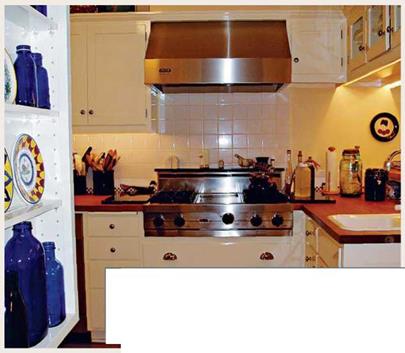
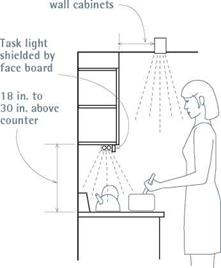
Leave a reply